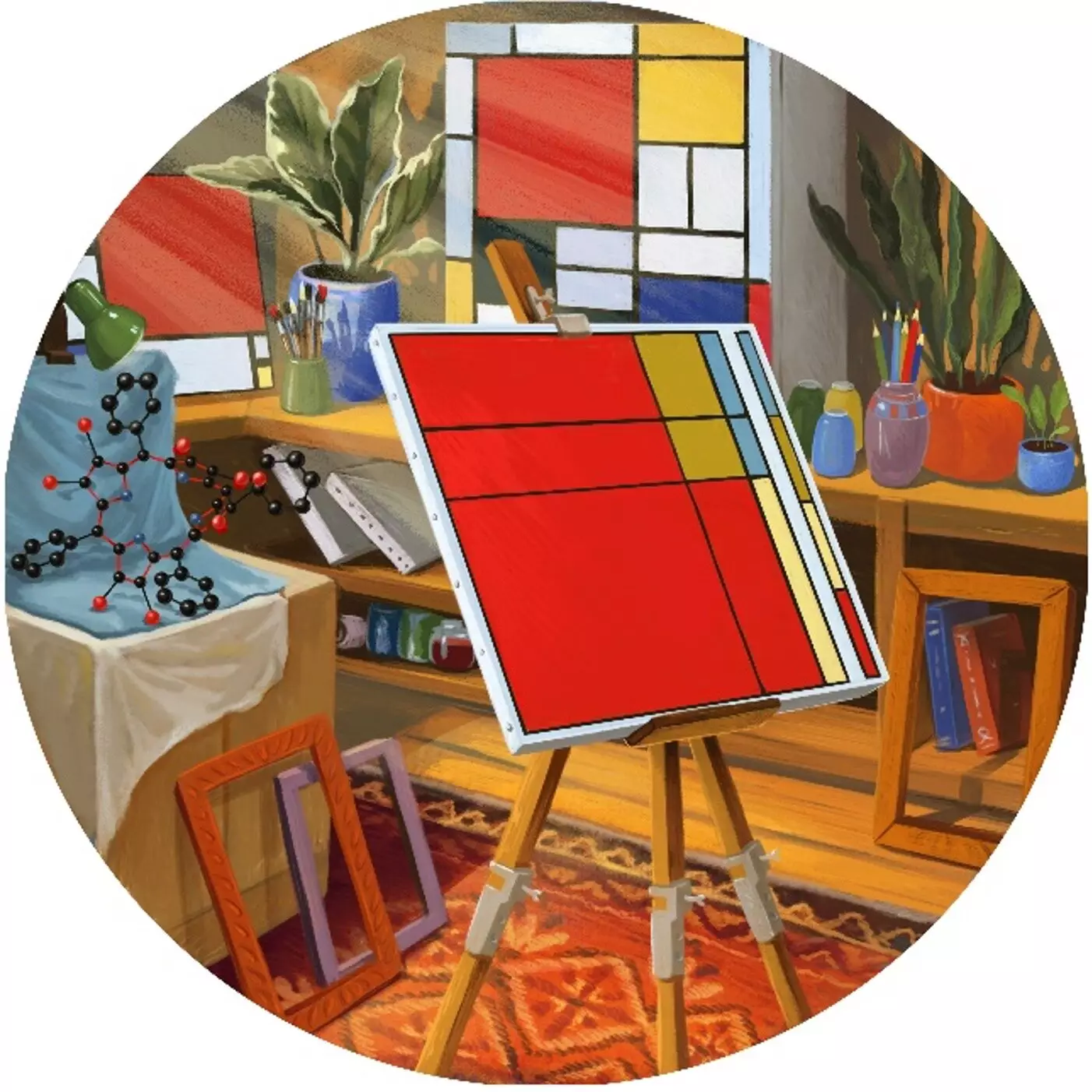In a remarkable intersection of creativity and scientific inquiry, researchers at Trinity College Dublin have forged an innovative computer program reimagining molecular structures through the lens of art. Inspired by the iconic Dutch painter Piet Mondrian, renowned for his use of geometric shapes and primary colors, this groundbreaking initiative provides a vibrant tapestry of visual representation that may profoundly reshape how we perceive chemistry. The endeavor symbolizes a significant shift within the scientific landscape, where the artistic rendition of molecules not only tantalizes the eye but also serves a critical function in understanding the inner workings of nature.
The Legacy of Mondrian: More Than Aesthetic Appeal
Piet Mondrian’s distinct style, characterized by the interplay of primary colors framed by bold lines, transcends mere aesthetics; it has continued to inspire various disciplines, including mathematics and statistics. His works reduced complex forms into beautifully simple blocks, drawing spectators and professionals alike into an exploration of symmetry and structure. This principle resonates deeply with scientists, especially chemists, who seek to unravel the intricate patterns governing molecular behavior. By marrying Mondrian’s artistic vision with scientific inquiry, Trinity’s researchers are ushering in a new methodological framework that celebrates both beauty and functionality.
A New Canvas for Chemistry
At the heart of this project is a cutting-edge program capable of generating Mondrian-style representations of molecular structures. By employing an artistic algorithm that converts 3D molecular data into visually striking 2D art, the tool opens doors for both scientists and artists. It creates a unique visual experience for each molecule, transforming complex chemical data into accessible images that illustrate the significance of symmetry inherent in molecular structures. According to Professor Mathias O Senge, who spearheads this initiative, the results are not just an artistic venture but a sophisticated tool for deepening our understanding of chemical properties.
For chemists, visualizing molecules as art helps demystify their complexity, elucidating an otherwise intricate structure that can often seem daunting. As Professor Senge remarks, traditional representations can obscure relationships between molecular structure and their dynamic behaviors, thus preventing a comprehensive understanding of how molecules interact in various environments.
Bridging Scientific Gaps through Abstraction
Christopher Kingsbury, principal author of the research article published in Angewandte Chemie, emphasizes the importance of abstraction in both art and science. By simplifying complex phenomena into a more digestible format, the program embodies a familiar act of reduction embraced by scientists seeking to convey foundational ideas. This abstraction mirrors Mondrian’s own artistic practice, wherein he distilled his subjects into essential forms, bypassing superfluous details.
In doing so, the Trinity College initiative offers an unprecedented medium for exploring the relationship between structure and function in chemistry, inviting wider audiences to contemplate the beauty and complexity of molecular behavior. The artistic interpretation of science empowers individuals to connect with chemistry on an emotional level, making it accessible and engaging to both experts and laypeople alike.
Transforming Molecular Understanding: The Case of Porphyrins
The collaborative project may hold particular promise in enhancing our understanding of porphyrins—known as “colors of life” due to their vibrant hues and biological significance. The exploration of porphyrins by Professor Senge and his team has already led to significant advancements, such as the creation of innovative biological sensors that act like miniature Venus flytraps, capturing environmental pollutants. By depicting the structures of these delicate molecules through an artistic lens, the program might facilitate new insights, unraveling the delicate dance between form and function that defines porphyrin behavior.
Art enables scientists to visualize and empathize with their subjects, possibly providing the key to unlocking complex interactions and guiding future research endeavors. As Senge points out, great art offers unique perspectives that can illuminate the underlying properties and behaviors of familiar molecules.
A New Paradigm for Interdisciplinary Collaboration
The initiative from Trinity College stands as a testament to the increasingly blurred lines between traditional disciplines. By fostering collaboration between science and art, researchers are crafting a new narrative that celebrates the intrigue of chemical structures while appealing to a broader audience. This fusion not only deepens appreciation for the intricate beauty of molecular architecture but could also stimulate innovative approaches within both fields.
In essence, this project is more than illuminating how molecules appear; it is about reshaping how we engage with and understand science. By infusing art into the realm of chemistry, Trinity College Dublin is pioneering a movement that could transform educational frameworks and research methodologies, urging both scientists and artists to explore new intersections of knowledge and creativity. The ongoing dialogue can fuel a deeper exploration into both the brilliance of chemistry and the allure of artistic expression, offering a rich tapestry of knowledge that appeals to the curious minds of our time.


Leave a Reply